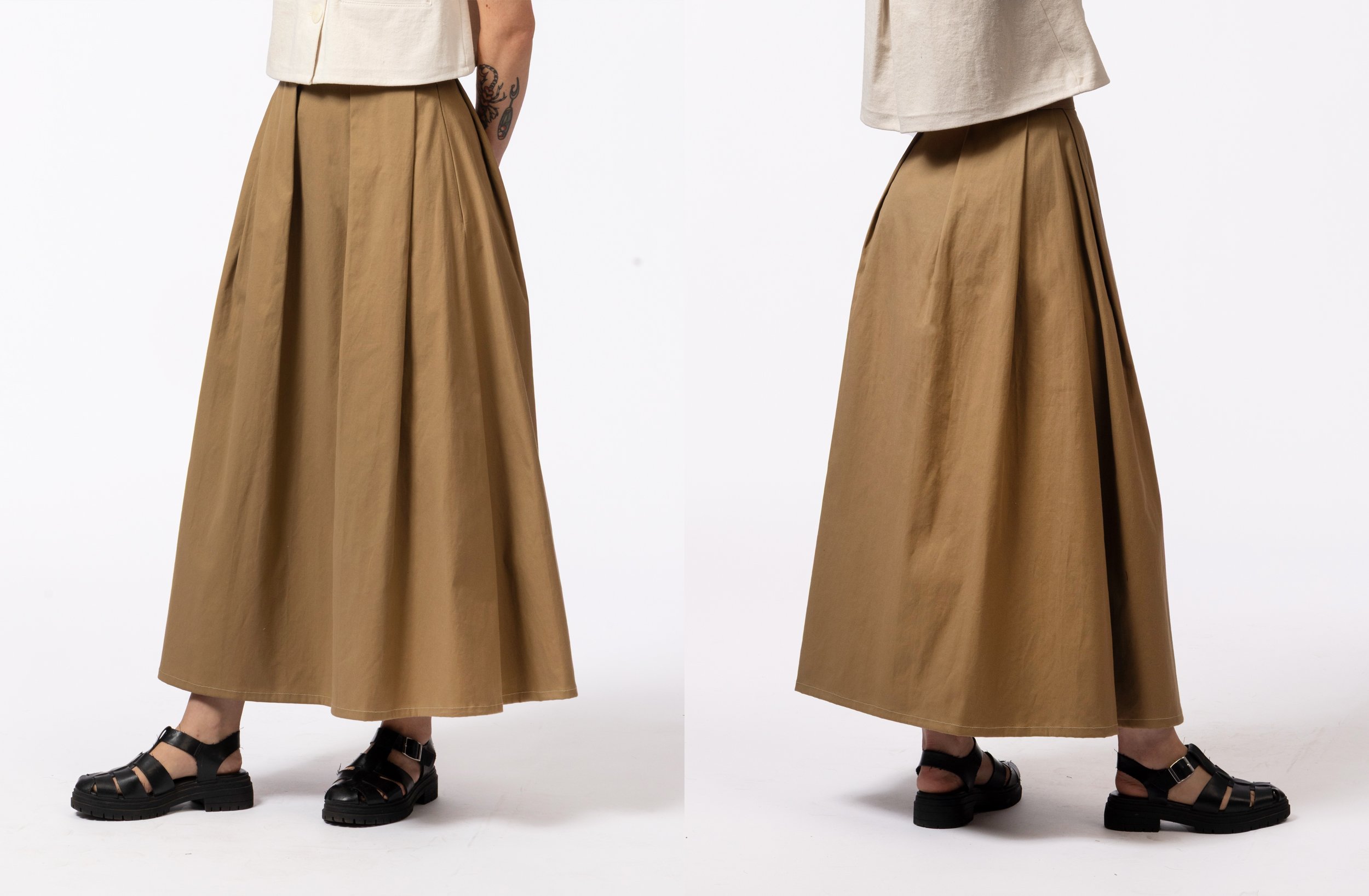Category
Willow Skirt Sewing Pattern
The Willow Skirt is a full-length pleated skirt that combines refined construction techniques with modern wearability. Designed to sit at your natural waistline with box pleats at the front and back, this pattern creates a beautiful full sweep that moves gracefully while maintaining a polished, structured silhouette. You'll master professional techniques including French seams and invisible zipper installation, creating a versatile wardrobe essential that transitions effortlessly from casual weekend wear to elegant evening occasions.
Silo Dress Feature
Learn more about the Silo Dress pattern. Originally released in 2022, this sleeveless dress sewing pattern is a wonderful layering piece for all season. Read about the design, construction highlights and see it made as a top. Keep reading to the end to watch the full-length sewing tutorial.
Collar Finishing: Stitching in the Ditch
The final step of finishing a collar stand can make or break the professional appearance of your garment, yet many sewists stick to familiar methods and avoid more advanced techniques like stitching in the ditch. This comprehensive guide covers every approach available—from the accessible topstitching method that provides full control over visible stitching lines, to the more challenging interior finishing technique that creates completely smooth exterior seams, to the intimidating but rewarding stitch-in-the-ditch method that hides stitching within the seamline itself. Each technique produces excellent results, so choose whichever approach feels most comfortable and gets you to that exciting moment of wearing your finished piece. Whether you're a beginner looking for foolproof methods or an experienced sewist ready to level up your skillset, understanding all your options will give you the confidence to tackle any collar stand finishing challenge.
One Pattern. Endless Variations.
In collaboration with guest designer Abigail Glaum-Lathbury, the Choice Pattern was created as a versatile, customizable base that introduces sewists to essential pattern-making fundamentals. With one pattern, you can explore and create dozens of unique looks, transforming a single design into endless possibilities.
FREE Collarless Template For The Swing Coat
The Swing Coat sewing pattern, a versatile piece designed for transitional style. Now, with a collarless variation, we're offering a sleek twist on the original design, providing sewists with a fresh way to extend the pattern's use. Dive into the video below to discover how to create this new variation and elevate your outerwear game.
Silo Dress Pattern Hack: Long Vest
This Silo Dress sewing pattern hack is a simple and straightforward tutorial. Make it a long vest and continue to get the most out of your sewing patterns.




















